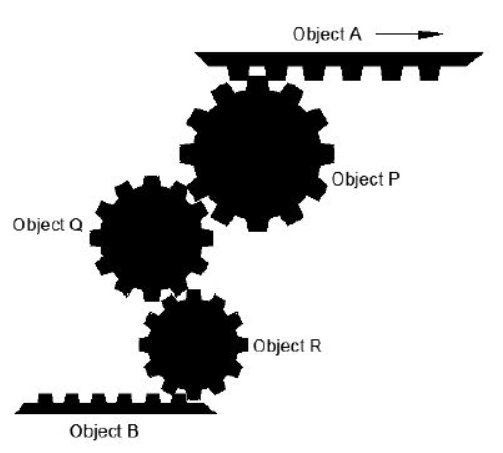The assembly shown below has three teethed circular objects (Pinions) and two teethed flat objects (Racks), which are perfectly mating with each other. Pinions can only rotate clockwise or anti-clockwise staying at its own center. Racks can translate towards the left $(\leftarrow)$ or the right $(\rightarrow)$ direction.

If the object $\text{A}$ (Rack) is translating towards the right $(\rightarrow)$ direction, the correct statement among the following is
- Object $\text{B}$ translates towards the right direction.
- Object $\text{B}$ translates towards the left direction.
- Object $\mathrm{R}$ rotates in the anticlockwise direction.
- Object $\mathrm{Q}$ rotates in the clockwise direction.